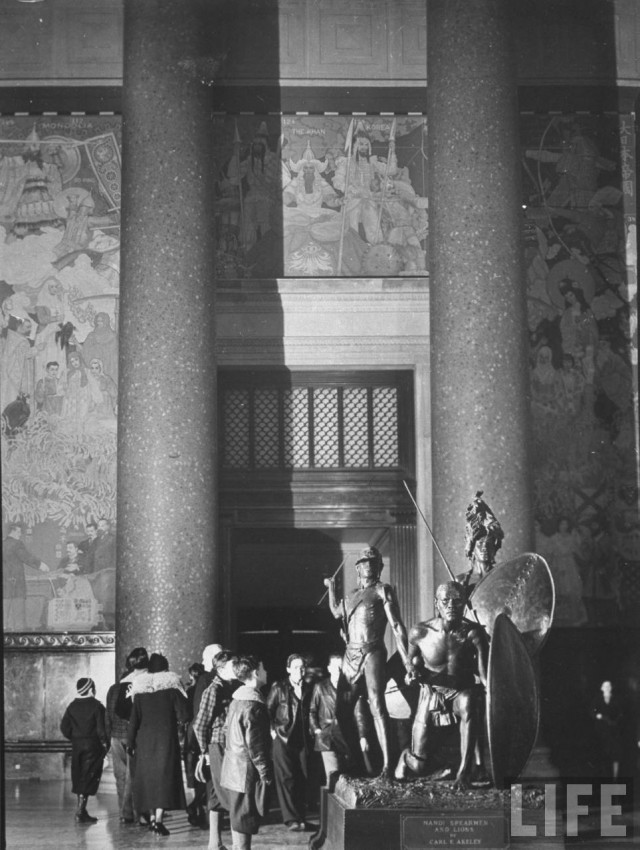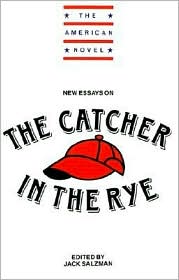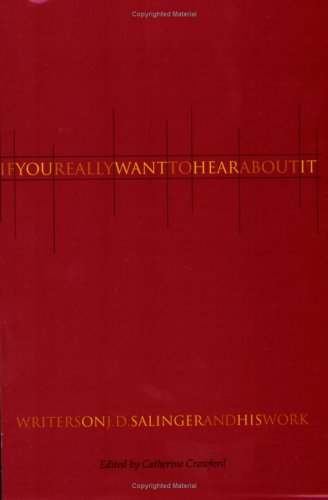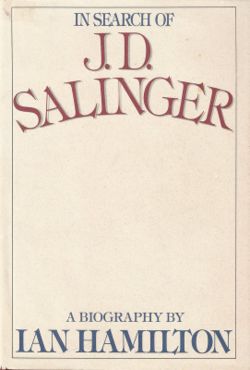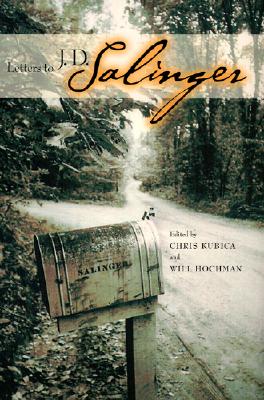Lillian Ross on Salinger
The New Yorker recently published a slide show featuring pictures of J. D. Salinger with Erik Ross (son of Lillian Ross), and with his own children. The photos are beautiful and show Salinger in a way the public rarely, if ever, saw him.
Perhaps even better is Ross’s piece on the Salinger she knew in which she reveals his love of children, Hitchcok’s The 39 Steps, and Ralph Waldo Emerson.
Ed. note: we do not own the rights to these photos, copyright and all other rights are the property of Lillian Ross, from whose personal collection the photographs were taken. Please visit the link above to view the photos. Enjoy!
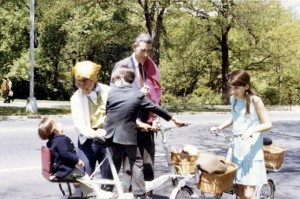
J.D. Salinger: The Fat Lady and the Chicken Sandwich by James E. Bryan
MLA Citation:
Bryan, James E. “J. D. Salinger: The Fat Lady and the Chicken Sandwich.” College English 23.3 (1961): 226-29. Print.
First Paragraph:
Critics have rightly complained that J.D. Salinger’s “Glass family chronicles” [citation omitted] lack the superb poetry and economy of his Nine Stories period. However the garrulity of Salinger’s recent narrators provides a not unwelcome annotation of symbolism and underlining of theme which can often serve as a reference to the interpretations of earlier stories.
Continue reading “J.D. Salinger: The Fat Lady and the Chicken Sandwich by James E. Bryan”
“Holden in the Museum” by John Seelye
MLA Citation:
First Paragraph:
Seelye’s essay starts with a quote from the novel: “I was the only one left in the tomb then. I sort of liked it, in a way. It was so nice and peaceful. Then, all of a sudden, you’d never guess what I saw on the wall.”
“I don’t think I was alone, as a college undergraduate in the early fifties, in regarding Holden Caulfield as a royal pain, an affront to my generation, which was prone to assume supine positions in the name of material well-being. Most of my classmates were conformists eager to become Organization Men inventing Hidden Persuaders, and the grey flannel suit (with that touch of conformist flair, the tattersall vest) was our uniform of choice. ours was the cause that James Dean’s Rebel was without, and James’s shadow figure, John Dean, was one of us. Our greatest fear was not of losing our individuality to corporate America but of losing our lives in Korea. Like Dan Quayle, we did our patriotic best by joining reverse units, hoping that the winds of war would pass by, leaving our private lives unruffled. About the time that Jack Kerouac was making his westward journey that would become thinly fictionalized as On the Road, I spent two summers driving from Connecticut to California to take part in a naval reserve training program that would result in an ensign’s commission just in time for the end of hostilities in Korea. It was not me that Salinger’s Catcher caught.”
Continue reading ““Holden in the Museum” by John Seelye”
New Essays on Catcher in the Rye Edited by Jack Salzman
MLA Citation:
Salzman, Jack. New Essays on The Catcher in the Rye. Cambridge: Cambridge UP, 1991. Print.
First Paragraph:
“In 1959, eight years after the publication of The Catcher in the Rye, Arthur Mizener began a Harper’s magazine essay about J. D. Salinger by noting that he was ‘probably the most avidly read author of any serious pretensions of his generation.’ There were good reasons why this should be the case, Mizener commented. Whatever limitations the work might have had – either of technique or of subject matter – within these limitations it was ‘the most interesting fiction that has come along for some time.’ Although, as we will see, there was little critical agreement about what the limitations of The Catcher in the Rye may have been, there was little disagreement with Mizener’s contention that Salinger was the most avidly read ‘serious’ writer of his generation. Soon after Nine Stories appeared in April 1953, it made the New York Times best-seller list. By 1961 sales of Catcher were reported to have reached one and half million copies in the United States alone.” (from The Introduction)
Table of Contents:
Series Editor’s Preface
This book is part of The American Novel Series
Introduction by Jack Salzman
Articles
John Seelye: Holden in the Museum
Michael Cowan: Holden’s Museum Pieces: Narrator and Nominal Audience in The Catcher in the Rye
Christopher Brookeman: Pencey Preppy: Cultural Codes in The Catcher in the Rye
Joyce Rowe: Holden Caulfield and American Protest
Peter Shaw: Love and Death in The Catcher in the Rye
Notes on Contributors
Selected Bibliography
“Love and Death in ‘The Catcher in the Rye'” by Peter Shaw
MLA Citation:
The full article is available here. *Please note we are working to contact the author to make sure that this linkage is acceptable, and it will be removed at the author’s request.
First Paragraph:
“By the time The Catcher in the Rye appeared in 1951, the theme of the sensitive youth beleaguered by society was well established in the American novel. Reviewing Truman Capote’s Other Voices, Other Rooms in 1948, Diana Trilling complained about the tendency of contemporary novelists to employ a ‘deterministic principle’ in which the youth was repeatedly presented as a ‘passive victim.’ Also well established by 1951 was the link between neurosis, self-destructive behavior, and social maladaptation on the one hand, and artistic sensibility and special insight on the other. Not surprisingly, Holden Caulfield was regarded as yet another fictional example of the sensitive, outcast character vouchsafed a superior insight by a touch of mental disturbance.”
Next paragraph for clarification purposes:
“Holden’s disturbance was taken to be both his unique, personal gift and the fault of a hypocritical, uncaring society, one particularly indifferent to its more sensitive souls. Holden’s insight into the adult world’s hypocrisies, moreover, appeared to derive precisely from his being its casualty. Given the deplorable world in which he lived, if by the end of his adventures Holden seemed ready to effect some kind of accommodation with society, this struck readers as inevitable, if regrettable.
Continue reading ““Love and Death in ‘The Catcher in the Rye’” by Peter Shaw”
At Home in the World, a memoir by Joyce Maynard
MLA Citation:
Maynard, Joyce. At Home in the World. New York: Picador, 1998. Print.
Jacket Copy:
“The daughter of brilliant and complicated parents-an adoring alcoholic artist for a father and a dazzling, funny, and wildly frustrating mother, driven to see her daughters achieve what had never been possible for herself-Joyce Maynard grew up with a pen in her hand, writing and publishing stories before she reached her teens.
In the spring of 1972, when she was a freshman at Yale, Maynard wrote a cover story for The New York Times Magazine about life as a young person in the sixties. Among the hundreds of letters she received in response was one from the famously reclusive author J.D. Salinger. They embarked on a correspondence. Within months she had left college and moved in with him-believing, despite their thirty-five-year age difference, that she had found her soulmate and that they would be together always.
Shortly before the publication of Looking Back, the book she wrote over the course of her time with him, Salinger sent Maynard away-an event so devastating that she herself retreated from the world for two years in a New Hampshire farmhouse.
At Home in the World explores the story of Maynard’s family, her relationship with Salinger, and the way the legendary writer’s influence, along with that of her parents, reverberated through her life in the decades that followed. In these pages, she chronicles her painful reentry into the world, her development as a writer, her marriage, her struggle to become a healthy parent to her own children, the death of her parents, and the years, following the end of her marriage, when she set out to rebuild her life.
A crucial turning point in Maynard’s story occurred when her own daughter turned eighteen-the age Maynard herself was when Salinger first approached her. Compelled to achieve a greater level of understanding, Maynard made the decision to break her twenty-five year silence about what had taken place with Salinger.
At Home in the World is at once both a tale of an extraordinary and unique experience, and a universal story about coming of age, the experience of loss and confusion, and the struggle to become whole. In these pages, Maynard confronts with unblinking honesty, compassion and surprising humor the most painful truths of her experience. But ultimately, hers is not a story of devastation or regret. At Home in the World is about redemption and triumph, and the wisdom acquired when at long last a woman embraces the disquieting truths of her history.”
If You Really Want to Hear About It: Writers on J.D. Salinger and His Work edited by Catherine Crawford
MLA Citation:
Jacket Copy:
“Famously reclusive and yet an undying source of inspiration for generations of readers, Salinger is one of the greatest mysteries of American literature. This is the first comprehensive collection of writings about J.D. Salinger and his work, an amalgam of over fifty years’ worth of attempted interviews, documented sightings, unauthorized profiles, and stifled cries of devotion, as well as the best of the book reviews.
Includes a never-before-published retrospective by Joyce Maynard, whose 1997 memoir, which documented her year-long affair with J.D. Salinger when she was sixteen years old, caused a rupture in the literary establishment.”
Contents:
Part I: In Search of Salinger
Shirlie Blaney: Interview with J.D. Salinger
Ernest Havemann: The Search for the Mysterious J.D. Salinger
Betty Eppes: What I Did Last Summer
Lacey Fosburgh: J.D. Salinger Speaks About His Silence
Michael Clarkson: Catching the “Catcher in the Rye” J. D. Salinger
Ron Rosenbaum: The Catcher in the Driveway
Part II: Critics and Cranks
Eudora Welty: Threads of Innocence
Arthur Mizener: The Love Song of J.D. Salinger
Alfred Kazin: J.D. Salinger: “Everybody’s Favorite”
John Updike: Anxious Days for the Glass Family
Mary McCarthy: J.D. Salinger’s Closed Circiut
Arnold Lubasch: Salinger Biography is Blocked
Mordecai Richler: Summer Reading; Rises at Dawn, Writes, Then Retires
Michiko Kakutani: From Salinger, a New Dash of Mystery
Jonathan Yardley: J. D. Salinger’s Holden Caulfield, Aging Gracelessly
Part III: Deconstructing Jerry
Sarah Morrill: A Brief Biography of J.D. Salinger
Paul Alexander: Theft, Rumor, and Innuendo: An excerpt from Salinger: A Biography
John Dugdale: Eighty Years of Solitude
Dipti R. Pattanaik: The Holy Refusal
David Skinner: The Sentimental Misanthrope: Why J. D. Salinger Can’t Write
Alex Beam: J. D. Salinger, Failed Recluse
Lois Menand: Holden at Fifty
Part IV: Family, Friends, and Fanatics
Margaret Salinger: Excerpt from Dream Catcher: A Memoir
Margaret Salinger: Daughter of J.D. Salinger, Discusses Her New Book, Dream Catcher
Joyce Maynard: Excerpt from At Home in the World
Daniel M. Stashower: On First Looking into Chapman’s Holden
Selections from Letters to J.D. Salinger
Joanna Smith Rakoff: My Salinger Year
J.B. Miller: Salinger and Me
In Search of J.D. Salinger by Ian Hamilton
MLA Citation:
Hamilton, Ian. In Search of J.D. Salinger: A Biography. New York: Random House, 1988. Print.
Dust Jacket Copy:
“In 1983 biographer Ian Hamilton began work on what he know would prove a formidable task: an account of the literary life of one of twentieth-century America’s most widely read and most reclusive writers, J.D. Salinger. What Hamilton didn’t know was that he would end up with not one story to tell but two, that his own life would ultimately become intimately entangled with that of his notoriously difficult subject.
Through The Catcher in the Rye and his timelessly provocative stories, Salinger’s magic has touched, and continues to touch, the lives of millions of readers. Yet the creator of Holden Caulfield and of the enigmatic Franny and Zooey is himself as much a mystery as even his most elusive characters. Now, in a brilliant feat of literary detection, the distinguished biographer Ian Hamilton penetrates the mystery, providing the first extended, responsible study of Jerome David Salinger, the writer and the man.
But In Search of J.D. Salinger is not merely the literary biography that Hamilton set out to write-the version that Salinger challenged in court. Ian Hamilton startling response has been to recast his book, telling the original story in fascinating detail, but also incorporating within it his own sometimes poignant, sometimes comic, sometimes exasperating quest for Salinger-a quest that has left him irrevocably a part of Salinger’s life, and Salinger a part of his.
Illuminating the roads he found into Salinger’s past-as well as describing the self-questioning process, the false starts, the shifts from certainty to doubt that occurred throughout the pursuit of his subject-Ian Hamilton takes us from Salinger’s New York City childhood and his adolescent years at Valley Forge military Academy to Salinger’s surprising military career; from close friendships and early influences to romances and a brief first marriage; from the days of writing for the ‘slicks’ to the first New Yorker successes; form Salinger’s reclusive obscurity to sudden and overwhelming fame-and his curious response to that fame. Finally, Hamilton recounts the legal confrontations of 1986 and 1987 that brought Salinger once again into the public world-if only briefly-and led Hamilton to retrace his own steps and retell his story, this time with himself as an essential player.
In Search of J.D. Salinger is a remarkable book in which a major biographer, critic, and poet has unearthed surprising quantities of information from sources other than Salinger himself, revealing what has never before been known about one of our most distinguished writers of fiction-and taking us along on his own turbulent journey in the process.”
Continue reading “In Search of J.D. Salinger by Ian Hamilton”
Letters to J.D. Salinger edited by Chris Kubica and Will Hochman
MLA Citation:
Book Jacket Copy:
“He published his only novel more than fifty years ago. He has hardly been seen or heard from since 1965. Most writers fitting such a description are long forgotten, but if the novel is The Catcher in the Rye and the writer is J.D. Salinger…well, he’s the stuff of legends, the most famously reclusive writer of the twentieth century. If you could write to him, what would you say?
Salinger continues to maintain his silence, but Holden Caulfield, Fanny and Zooey, and Seymour Glass–the unforgettable characters of his novel and short stories–continue to speak to generations of readers and writers. Letters to J.D. Salinger includes more than eighty personal letters addressed to Salinger from well-known writers, editors, critics, journalists, and other luminaries, as well as from students, teachers, and readers around the world, some of whom have just discovered Salinger for the first time. Their voices testify to the lasting impression Salinger’s ideas and emotions have made on so many diverse lives.”


